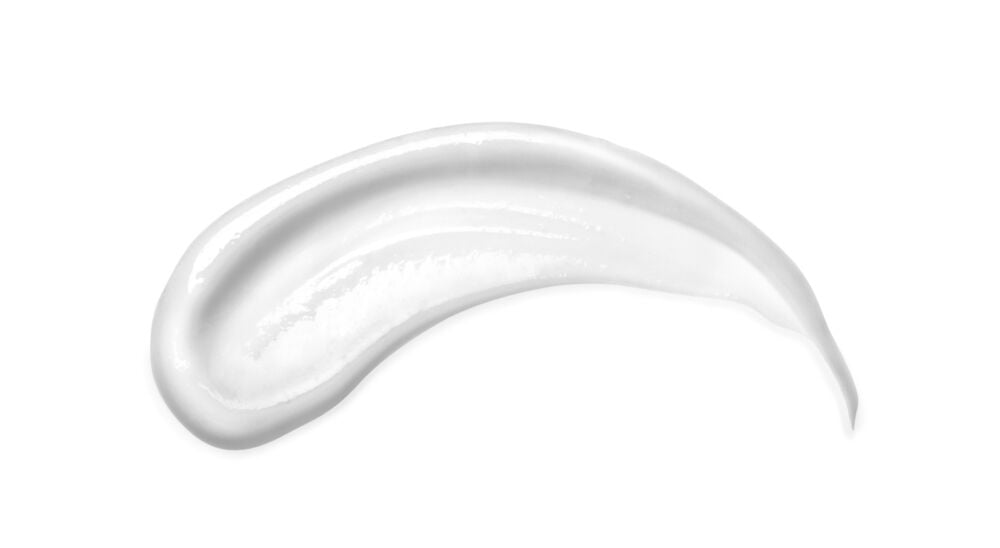Are cervical fluid, vaginal discharge, and arousal fluid all the same thing? Not really. Today, we’ll take a look at this topic and make a clear distinction between all types of vaginal fluids and discharges.
-
Tracking cycle
-
Getting pregnant
-
Pregnancy
-
Help Center
-
Flo for Partners
-
Anonymous Mode
-
Flo app reviews
-
Flo Premium New
-
Secret Chats New
-
Symptom Checker New
-
Your cycle
-
Health 360°
-
Getting pregnant
-
Pregnancy
-
Being a mom
-
LGBTQ+
-
Quizzes
-
Ovulation calculator
-
hCG calculator
-
Pregnancy test calculator
-
Menstrual cycle calculator
-
Period calculator
-
Implantation calculator
-
Pregnancy weeks to months calculator
-
Pregnancy due date calculator
-
IVF and FET due date calculator
-
Due date calculator by ultrasound
-
Medical Affairs
-
Science & Research
-
Pass It On Project New
-
Privacy Portal
-
Press Center
-
Flo Accuracy
-
Careers
-
Contact Us
What’s the Difference Between Vaginal Discharge, Arousal Fluid, and Cervical Mucus?


Every piece of content at Flo Health adheres to the highest editorial standards for language, style, and medical accuracy. To learn what we do to deliver the best health and lifestyle insights to you, check out our content review principles.
What is vaginal discharge?
Vaginal discharge is a normal, healthy occurrence. In fact, it serves a very important function in the reproductive system. Normal vaginal discharge can range in color from clear to milky white, and its function is to remove dead cells and bacteria. This helps keep the vagina clean and sustain normal microflora.
The amount, smell, and viscosity (thickness) of discharge that you experience can be different from day to day. It depends on the day of your menstrual cycle, if you are pregnant or breastfeeding, and if you are sexually aroused.
What is cervical mucus?
Cervical mucus is a clear or gel-like fluid that is produced by the cervix. The fluid will change based on your menstrual cycle and if you are pregnant. It can be helpful to know what your cervical mucus looks like during the different stages of your menstrual cycle, especially if you are trying to conceive.
Cervical mucus plays a critical role in conception by eliminating abnormal sperm and protecting healthy sperm as they travel through the reproductive system to the egg. Let’s take a look at the different types of cervical mucus and why we experience different types at different times.
Mucus produced by the cervix is primarily controlled by the hormone estrogen. Estrogen is also responsible for some of the changes you see during your menstrual cycle. Throughout your menstrual cycle, the cervical mucus changes to support the possibility of conception.
Post-menstruation cervical mucus is typically the least amount you will experience during your cycle. This would be your baseline amount and is almost “dry.” As you get several days past your period, you will see an increase in the amount of mucus when you look at your underwear or wipe. Immediately after your period, this can appear slightly red, yellow, or white. It might also look a little cloudy and is somewhat sticky. As you approach ovulation, the mucus may appear creamier and white.
During ovulation, egg-white cervical mucus is present. This is a type of cervical fluid that is produced by the cervix just before ovulation occurs. At this stage of your menstrual cycle, estrogen levels are increasing rapidly and causing the cervix to increase the amount of mucus that it is producing. The appearance is clear and sticky, resembling egg whites. When you notice this type of mucus, you might be able to determine the most fertile days of your cycle.
After ovulation, the amount of mucus declines and becomes thicker.
If you worry that you might be experiencing excessive cervical mucus or if your vaginal discharge changes in color, texture, or has a foul odor, talk to your health care provider for advice.
Take a quiz
Find out what you can do with our Health Assistant
Is cervical fluid the same as vaginal discharge?
Vaginal discharge is a general term that can be used to describe any fluid that comes out of your vagina. Cervical fluid, made by the cervix, travels through the vaginal canal and exits through the vagina. Cervical fluid can also be referred to as vaginal discharge.
What is cervical fluid? The easiest way to explain cervical fluid is to describe how it feels. The baseline of vaginal “wetness” is what your body makes on a daily basis to keep the vagina healthy and clean. Typically, this feels like nothing is really going on. This is also the typical amount of vaginal discharge that you experience right after your period. The level or amount of fluid present beyond this baseline is considered cervical fluid.
Here are different types of cervical fluid that we will explore.
None — This is your baseline. It is dry to the touch or slightly damp. It is a small amount of fluid that evaporates quickly. There is little or no appearance on your underwear. This is typically what you will see right after your period.
Sticky — There is little or no feeling of fluid. It may look slightly white or yellow, resembling glue. On your fingers, it may be sticky, pasty, or even crumbly. It may sit on top of the fabric on your underwear (not soak in). This is present closer to the time of ovulation.
Egg white — This may make your vagina feel slippery or a little watery. To the touch, it will feel wet, sticky, and elastic. If you place it between your index finger and thumb, then move them apart, it stretches. It will have the appearance of egg whites (clear to milky white). This discharge can make your underwear feel wet. This occurs during the ovulation phase of your menstrual cycle.
Watery — This can feel like water running out of your vagina. It will look watery and clear or slightly white like skim milk. On your fingers, it is very wet and slippery. This type can make much larger wet spots on your underwear that can even soak through. This occurs when you become sexually aroused.

None of these vaginal discharges should have a foul odor. If you feel that the discharge you are experiencing has changed and you are concerned about it, it is best to seek professional medical advice. This could be a sign of a more serious issue related to a sexually transmitted infection or another medical condition. It is also important to schedule regular appointments with your health care provider to monitor your reproductive health and the health of your cervix.
Arousal fluid
Arousal fluid occurs when your body senses sexual desire or attraction. During this process, there is increased blood flow to your genitals, including the vaginal walls, which causes fluid to pass through them. This makes the tissues wet and provides lubrication, referred to as the first stage of arousal.
The second stage of sexual arousal is the plateau. During this period, the blood flow to the genitals peaks, and the lower third of the vagina swells and becomes firm. This region is referred to as an introitus or orgasmic platform. At this stage, arousal fluid production increases, your clitoris pushes back toward the pelvic bone, and your body prepares for orgasm. At this point, continuous stimulation is necessary to achieve an orgasm.
That brings us to the next phase of arousal: orgasm. An orgasm is an intense release of the sexual heightening from the previous stages. This pleasurable part of sexual arousal completes the cycle with rhythmic contractions of the genital muscles and increased arousal discharge. This is referred to as a climax, orgasm, or “coming.” Female genitalia do not require a recovery phase, so with continued stimulation, you can achieve multiple orgasms.
Squirting fluid
Some people experience a heightened sexual arousal that causes the genital contractions during orgasm to “squirt” arousal fluid from the vagina. This is sometimes referred to as female ejaculation. This clear fluid is expelled from glands close to the urethra. These glands are known as the Skene’s glands.
The final stage of sexual arousal is called resolution. This is when the body returns to its normal resting state. If you feel that you may have an underlying issue (physical or psychological) that prevents you from achieving orgasm, consult a medical professional for advice.


Hey, I'm Anique
I started using Flo app to track my period and ovulation because we wanted to have a baby.


The Flo app helped me learn about my body and spot ovulation signs during our conception journey.


I vividly
remember the day
that we switched
Flo into
Pregnancy Mode — it was
such a special
moment.
Real stories, real results
Learn how the Flo app became an amazing cheerleader for us on our conception journey.
References
Han, Leo, et al. “Cervical Mucus and Contraception: What We Know and What We Don’t.” Contraception Journal, An International Reproductive Health Journal Contraception, 1 Nov. 2017, www.contraceptionjournal.org/article/S0010-7824(17)30391-8/fulltext.
Puppo, Vincenzo, and Giulia Puppo. “Anatomy of Sex: Revision of the New Anatomical Terms Used for the Clitoris and the Female Orgasm by Sexologists.” Wiley Online Library, John Wiley & Sons, Ltd, 6 Oct. 2014, onlinelibrary.wiley.com/doi/abs/10.1002/ca.22471.
McIntyre-Smith, Alexandra, and Taylor Kohut. “‘Did You Come?’ A Qualitative Exploration of Gender Differences in Beliefs, Experiences, and Concerns Regarding Female Orgasm Occurrence During Heterosexual Sexual Interactions.” Taylor & Francis, The Journal of Sex Research, 18 Dec. 2013, www.tandfonline.com/doi/abs/10.1080/00224499.2013.838934.
Whipple, Beverly. “Female Ejaculation, G Spot, A Spot, and Should We Be Looking for Spots?” Current Sexual Health Reports, Springer US, 12 Mar. 2015, link.springer.com/article/10.1007%2Fs11930-015-0041-2.
Mayo Clinic Staff. “Cervical Mucus Method for Natural Family Planning.” Mayo Clinic, Mayo Foundation for Medical Education and Research, 13 Nov. 2018, www.mayoclinic.org/tests-procedures/cervical-mucus-method/about/pac-20393452.
“Vaginal Discharge.” NHS Choices, NHS, 17 Jan. 2018, www.nhs.uk/conditions/vaginal-discharge/.




